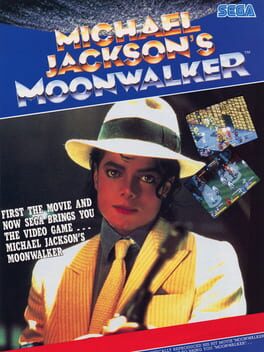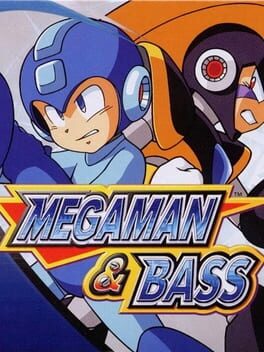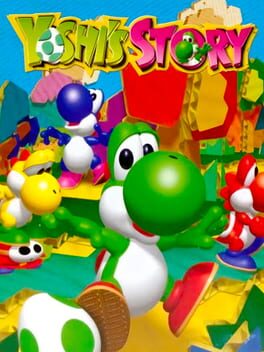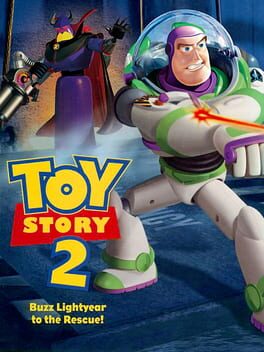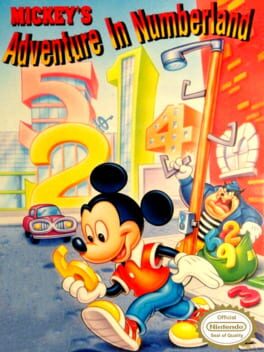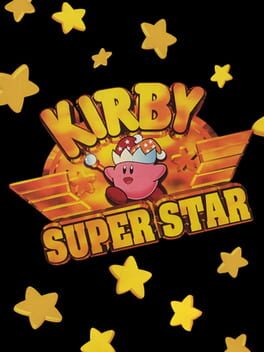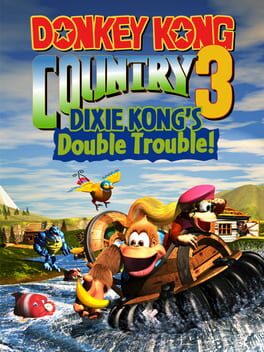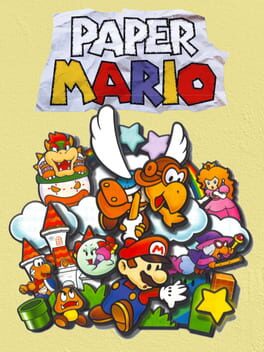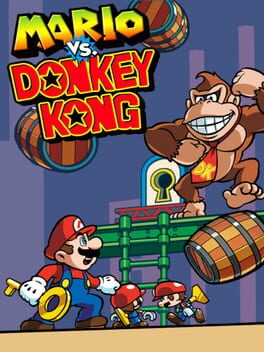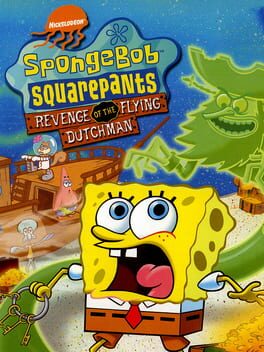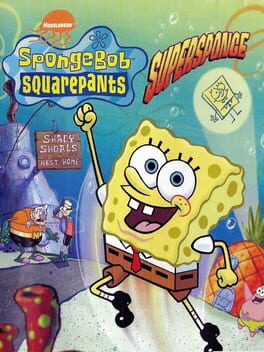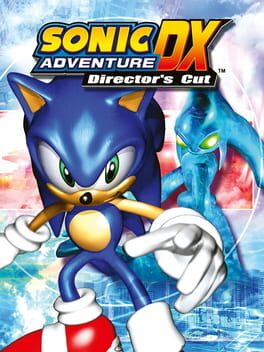RobotJams
1998
I went in to this game expecting it to be brutally difficult, which it partially was. Tough platforming sections, spongey enemies, and incredibly unforgiving boss patterns were plentiful. However, I never found it unfair, every time I died or game overed, it was always my fault. The difficulty was also a breath of fresh air for a series I felt peaked in terms of challenge with the first game on NES, especially lacking in the seventh and eighth entries. The final gauntlet before Wily was particularly gripping, as it handled the boss rush in the same way as Mega Man X with some of the best disappearing block sections in the series. Weapons are also pretty useful, with the Ice Wall in particular actually being integrated in level design with Mega Man's campaign.
1997
Yo, Yo, Yoshi - fire bars by a disembodied voice
I can't say that I would compare this entry in the Yoshi series favorably to that of Yoshi's Island or the later Yoshi's Wooly World, or other N64 side-scrollers like Mischief Makers or Kirby 64, but I feel that it still holds merit.
The artsy juvenile charm from the earlier SNES entry is carried over in full, combined with prerendered strangeness that likens it to games like Tomba!. Adding to this style are some of the level set pieces and music tracks, which are entirely unique and bizarre across the genre.
I found that the most interesting aspect of this game was its overall game design, especially how it handles progression, which is vaguely reminiscent of Shadow the Hedgehog funnily enough. Across the six worlds, there are four levels to play, with 24 overall. However, only the first world has the first four available to play immediately. Upon beating one level, you are sent to the next world's set of levels with no way to play the other three until you beat the game. This is already strange enough, but the number of levels available to play are linked to collectibles scattered about the level you just played. If I had to guess, this is done to incentivize exploration in the limited stage count, which ties back into the more score-attack focus of this game. The more collectibles you find, the higher your score. While I vastly prefer the more traditional progression of Yoshi's Island, there's enough depth present in the systems here to enjoy thoroughly.
My one and only complaint with this title is the control. There's this weird momentum to when Yoshi's on the ground that interacts weirdly with the jumping mechanics, resulting in a sort of sluggish feel. Granted, this doesn't tend to seriously impact playability, but can rear in rare life-or-death moments like in my least favorite level "Jungle Puddle" where instant kill hazards are plenty.
With my final thoughts, I'd say this is a very imaginative experience with interesting system and level design. My personal favorite levels from each world were "Tower Climb", "Jelly Pipe", "Tall Tower", "Piranha Grove", "Lots O' Jellyfish". and "Lift Castle".
I can't say that I would compare this entry in the Yoshi series favorably to that of Yoshi's Island or the later Yoshi's Wooly World, or other N64 side-scrollers like Mischief Makers or Kirby 64, but I feel that it still holds merit.
The artsy juvenile charm from the earlier SNES entry is carried over in full, combined with prerendered strangeness that likens it to games like Tomba!. Adding to this style are some of the level set pieces and music tracks, which are entirely unique and bizarre across the genre.
I found that the most interesting aspect of this game was its overall game design, especially how it handles progression, which is vaguely reminiscent of Shadow the Hedgehog funnily enough. Across the six worlds, there are four levels to play, with 24 overall. However, only the first world has the first four available to play immediately. Upon beating one level, you are sent to the next world's set of levels with no way to play the other three until you beat the game. This is already strange enough, but the number of levels available to play are linked to collectibles scattered about the level you just played. If I had to guess, this is done to incentivize exploration in the limited stage count, which ties back into the more score-attack focus of this game. The more collectibles you find, the higher your score. While I vastly prefer the more traditional progression of Yoshi's Island, there's enough depth present in the systems here to enjoy thoroughly.
My one and only complaint with this title is the control. There's this weird momentum to when Yoshi's on the ground that interacts weirdly with the jumping mechanics, resulting in a sort of sluggish feel. Granted, this doesn't tend to seriously impact playability, but can rear in rare life-or-death moments like in my least favorite level "Jungle Puddle" where instant kill hazards are plenty.
With my final thoughts, I'd say this is a very imaginative experience with interesting system and level design. My personal favorite levels from each world were "Tower Climb", "Jelly Pipe", "Tall Tower", "Piranha Grove", "Lots O' Jellyfish". and "Lift Castle".
"You're mocking me, aren't you?", Buzz says for the fourth time after missing a ledge grab because the game hates me.
I was very pleasantly surprised with this game, being a movie tie-in license, which are historically terrible. I'm usually very mixed on Traveler's Tales pre-Lego games like Sonic the Hedgehog 3D Blast or Crash Bandicoot: Wrath of Cortex which are decent, but uninspiring.
Toy Story 2 also tends to fall into this camp, where its entirely competent as a game, but isn't particularly special in comparison to its contemporaries. Granted, the level design is very solid, focusing on more contained environments that link together with their own unique challenges. Each level contains five collectible tokens, with three of those being linked to repeated challenges like collecting 50 coins, finding and returning 5 items to an NPC, and fighting against the level's boss. Most of the remaining tokens are linked to time-limit based challenges or just by reaching a point in the map Mario 64-style. As you might gather from this description, while the design is very safe and solid, it does get very repetitive.
While I mostly enjoyed my time with the game, there was always something frustrating that kind of curbed that enjoyment. The more vertical levels like the construction yard and the alleyway are really annoying with knocking you off at the worst time. Some of the bosses are really thoughtless too, usually being war of attritions with little strategy. My biggest gripes are with some of the control quirks, the ledge grab doesn't seem to work reliably, even when it looks like it should. Sometimes bounce pads won't send you where you need to go, which is weird since they're mostly automated.
While these are mostly minor grievances, its really the technical aspects where this game has aged the most. It's not unexpected with the N64, as many first party titles were guilty of substandard frame rates like Banjo-Tooie or Ocarina of Time. This combines with a camera limited to the x-axis to create a sometimes nauseating experience.
I know I've been mostly negative for this review, but I still enjoyed my time completing the game. The level design has little moments of cleverness, especially in trying to turn regular mundane environments like houses and toy stores into charming video game levels. I also really appreciate how the backtracking is handled, where only new sections of levels are tied behind powerups found later in the game.
In short, this is a very no-frills experience with fun, charming level design and strong collectathon design. It does show its age in the technical aspects, and its lack of budget in presentation, but still proves to be a good time in spite of itself.
I was very pleasantly surprised with this game, being a movie tie-in license, which are historically terrible. I'm usually very mixed on Traveler's Tales pre-Lego games like Sonic the Hedgehog 3D Blast or Crash Bandicoot: Wrath of Cortex which are decent, but uninspiring.
Toy Story 2 also tends to fall into this camp, where its entirely competent as a game, but isn't particularly special in comparison to its contemporaries. Granted, the level design is very solid, focusing on more contained environments that link together with their own unique challenges. Each level contains five collectible tokens, with three of those being linked to repeated challenges like collecting 50 coins, finding and returning 5 items to an NPC, and fighting against the level's boss. Most of the remaining tokens are linked to time-limit based challenges or just by reaching a point in the map Mario 64-style. As you might gather from this description, while the design is very safe and solid, it does get very repetitive.
While I mostly enjoyed my time with the game, there was always something frustrating that kind of curbed that enjoyment. The more vertical levels like the construction yard and the alleyway are really annoying with knocking you off at the worst time. Some of the bosses are really thoughtless too, usually being war of attritions with little strategy. My biggest gripes are with some of the control quirks, the ledge grab doesn't seem to work reliably, even when it looks like it should. Sometimes bounce pads won't send you where you need to go, which is weird since they're mostly automated.
While these are mostly minor grievances, its really the technical aspects where this game has aged the most. It's not unexpected with the N64, as many first party titles were guilty of substandard frame rates like Banjo-Tooie or Ocarina of Time. This combines with a camera limited to the x-axis to create a sometimes nauseating experience.
I know I've been mostly negative for this review, but I still enjoyed my time completing the game. The level design has little moments of cleverness, especially in trying to turn regular mundane environments like houses and toy stores into charming video game levels. I also really appreciate how the backtracking is handled, where only new sections of levels are tied behind powerups found later in the game.
In short, this is a very no-frills experience with fun, charming level design and strong collectathon design. It does show its age in the technical aspects, and its lack of budget in presentation, but still proves to be a good time in spite of itself.
With its last hushed, wheezing breaths, the NES delivered two sister titles. Like the Pokemon series after it, these releases pose the player with an introspective question: will you go on a safari through the country of Letterland, or will you make haste to solve the crises that plague Numberland?
Whichever you chose, Mickey Mouse is your humble avatar. In this adventure, players will be put to the test with mind-boggling algebraic equations as they reclaim Numberland's national treasure back from the clutches of one villainous Captain Peg-Leg Pete. Not alone on his quest, Mickey will meet with the the country's lone defender, Sheriff Donald Duck, who despite his ability isn't able to tackle the threat without the Mouse's help.
From the dizzing heights of the Numberland space station to the the treacherous pits of the menacing Number Factory, this is surely one of Mickey's finest outings in the realm of gaming. If I, a mere groveling reviewer, could afford this game a full five stars, I would. Alas, I will have to give it the valor of one half star.
Whichever you chose, Mickey Mouse is your humble avatar. In this adventure, players will be put to the test with mind-boggling algebraic equations as they reclaim Numberland's national treasure back from the clutches of one villainous Captain Peg-Leg Pete. Not alone on his quest, Mickey will meet with the the country's lone defender, Sheriff Donald Duck, who despite his ability isn't able to tackle the threat without the Mouse's help.
From the dizzing heights of the Numberland space station to the the treacherous pits of the menacing Number Factory, this is surely one of Mickey's finest outings in the realm of gaming. If I, a mere groveling reviewer, could afford this game a full five stars, I would. Alas, I will have to give it the valor of one half star.
1996
It's very strange to look back at this game in a time where it's remake outclasses it in almost every way, but also where the series it hails from has evolved artistically far beyond itself.
There are times where the art direction is very detailed and makes great use of perspective to indicate scope (like Dyna Blade's nest in the mountains or Meta Knight's ship looming in the orange sunlit skies), but there is an overuse of prerendered and image-based graphics that leave a weird uncanniness. For example, those weird flat green mountaintops in Cavios, those swinging bells in Gourmet Race, and those terrible compressed cloud JPEGs in the last area of Great Cave Offensive. They all clash pretty heavily with the otherwise lovely spritework of bosses and other characters.
Although I may not always like its presentation, it is distinctly charming for its era. I think the soundtrack is what truly elevates it to that weird dreamy status a lot of early Kirby is shrouded in (like pre Nightmare in Dream Land), especially the Dyna Blade subgame. My personal favorite subgame was Milky Way Wishes, although Revenge of Meta Knight is very close behind it.
There are times where the art direction is very detailed and makes great use of perspective to indicate scope (like Dyna Blade's nest in the mountains or Meta Knight's ship looming in the orange sunlit skies), but there is an overuse of prerendered and image-based graphics that leave a weird uncanniness. For example, those weird flat green mountaintops in Cavios, those swinging bells in Gourmet Race, and those terrible compressed cloud JPEGs in the last area of Great Cave Offensive. They all clash pretty heavily with the otherwise lovely spritework of bosses and other characters.
Although I may not always like its presentation, it is distinctly charming for its era. I think the soundtrack is what truly elevates it to that weird dreamy status a lot of early Kirby is shrouded in (like pre Nightmare in Dream Land), especially the Dyna Blade subgame. My personal favorite subgame was Milky Way Wishes, although Revenge of Meta Knight is very close behind it.
I like the second DKC more thematically, but I still love the monster movie vibes this one brings. Its just such a weird aesthetic choice for a Donkey Kong game, it's great. The more varied colors and denser detailing add to a much moodier atmosphere than the other games in the trilogy, also highlighted by Eveline Novakovic's score. Specifically, I adore how the water levels look and sound in this game, with vibrant coral reefs and dark waters brought to life by the ominous track, Water World.
The big improvement here over its predecessor is the completion experience, as its far more standardized as to what to expect in terms of collectibles in each level. The second game ws very spontaneous with its collectible placement, which can be fun but also annoying. My only real gripes with this one is that the field of view for some levels like fucking Kong-Fused Cliffs is really bad and the secret world, Kremetoa, is home to some of the worst levels in the entire trilogy. Granted on that last point, there's only like 3 really bad ones.
This is true for all the DKC games on SNES, but you really can't go wrong with these games if your looking for good and varied challenge paired with unique presentation.
The big improvement here over its predecessor is the completion experience, as its far more standardized as to what to expect in terms of collectibles in each level. The second game ws very spontaneous with its collectible placement, which can be fun but also annoying. My only real gripes with this one is that the field of view for some levels like fucking Kong-Fused Cliffs is really bad and the secret world, Kremetoa, is home to some of the worst levels in the entire trilogy. Granted on that last point, there's only like 3 really bad ones.
This is true for all the DKC games on SNES, but you really can't go wrong with these games if your looking for good and varied challenge paired with unique presentation.
1994
Cranky Kong winds up his old Victrola to play an old creaky tune, one evocative of days long past. Times of climbing red girders and throwing barrels down at his former master, the Jumpman. In his younger days, he was known as Donkey Kong, then Donkey Kong Sr., having started a family with his beloved Wrinkley Kong. He remembers the day Jr. left, never to be seen again, leaving behind a son of his own.
Idfk, I really like this game, even if half of the levels are in dumb ass caves (like why would you make assets for a crystal grotto level and only use it once?). Still, I thinks it's a testament to this game's quality that the later levels, while challenging, are still really engaging and still experiment with new mechanics.
Idfk, I really like this game, even if half of the levels are in dumb ass caves (like why would you make assets for a crystal grotto level and only use it once?). Still, I thinks it's a testament to this game's quality that the later levels, while challenging, are still really engaging and still experiment with new mechanics.
2000
I'm very glad I finally gave this game the time of day, it succeeds as a pseudo-successor to Super Mario RPG with flying colors. Pros: the action command system is novel, overworld traversal is incredibly fun, dungeons are mostly good, and the story is simple but well-written and adventurous. Cons: the game is too damn easy, Shy Guy's Toybox exists, the battle system feels pretty static with very little change in strategy (Bombette is OP), and most of the soundtrack is either forgettable or annoying with a few major exceptions.
This really feels like a bootleg, but not in the funny cool way, more like in the "what even is this" kind of way. Don't get it twisted, this is still a fun game but it lacks the polish you would expect out of a first party Nintendo game. The graphics are very cheap looking, a large amount of the sound effects are either really jarring or stock, the music is just outright terrible, and most of the time when I die, I feel like it wasn't my fault. Besides that, I had a decent time with this one.
Pretty fun puzzle platformer with some annoying quirks and stage gimmicks at points. A lot more interesting to play than SuperSponge, but you could do better than this if you’re looking for a SpongeBob game on GBA although I’m not sure why you would be. Also, why does the Flying Dutchman have like PS5 graphics compared to everything else? dude has like 4K resolution.
2007
Trapped in his mortal form, each step taken felt heavier than the last. The planet’s tarry surface was slick from the smothering radiation of a dying star, giving way to the beast’s labored movement. With one final staggered lunge, he rested his eyes upon the sea of fire before him as all the terrain crumbled to pebbles and ash. He felt cheated by life’s cruel hand, the bitterness welled up inside his core. The beast knew it was his destiny to lose, but something about this time felt final. Like all other times, however, he could only meet this fate with outspoken denial. He mustered a final surge of pride and bravado through one final message of desperation:
“ NOOOO! My Galaxy! My empire! This can't be happening...”
this game was epic, y’all.
“ NOOOO! My Galaxy! My empire! This can't be happening...”
this game was epic, y’all.
My favorite part of this game is how the Dr. Robotnik model hasn't been updated at all to match any of the other characters. You can't miss with low-poly Deem Bristow screaming at animals. Also, Gamma's story is pretty damn good considering the presentation.
If I had to rank every character in order of least enjoyable to most enjoyable, it would go like this: Big, Amy, Tails, Knuckles, Gamma, Sonic. Big is pretty self-explanatory, but Amy could've been at least good if not for the awful speed, and Tails feels like straight up filler. Which leads me to my main complaint with the design of Sonic Adventure, that so much time and effort went into making the Sonic campaign the best it could reasonably be, but other campaigns like Tails or Amy (even Gamma to an extent) feel underdeveloped and end before they can make any impact whatsoever.
Tail's story of stepping out of Sonic's shadow is contextually appropriate for the gameplay, where Tails just has to outpace Sonic to the goal. However, it results in a feeling of sameness since you're essentially playing shorter versions of stages you've already played as Sonic. Amy's gameplay of running away from Zero could've been interesting, but Zero is no threat at all and Amy is not fun to control, save for vaulting over platforms with the hammer jump. I'm not even going to waste time talking about Big, even if his campaign lasts so little time when you understand the controls. I think the only characters besides Sonic that are interesting to play as are Knuckles and Gamma.
If I had to rank every character in order of least enjoyable to most enjoyable, it would go like this: Big, Amy, Tails, Knuckles, Gamma, Sonic. Big is pretty self-explanatory, but Amy could've been at least good if not for the awful speed, and Tails feels like straight up filler. Which leads me to my main complaint with the design of Sonic Adventure, that so much time and effort went into making the Sonic campaign the best it could reasonably be, but other campaigns like Tails or Amy (even Gamma to an extent) feel underdeveloped and end before they can make any impact whatsoever.
Tail's story of stepping out of Sonic's shadow is contextually appropriate for the gameplay, where Tails just has to outpace Sonic to the goal. However, it results in a feeling of sameness since you're essentially playing shorter versions of stages you've already played as Sonic. Amy's gameplay of running away from Zero could've been interesting, but Zero is no threat at all and Amy is not fun to control, save for vaulting over platforms with the hammer jump. I'm not even going to waste time talking about Big, even if his campaign lasts so little time when you understand the controls. I think the only characters besides Sonic that are interesting to play as are Knuckles and Gamma.
